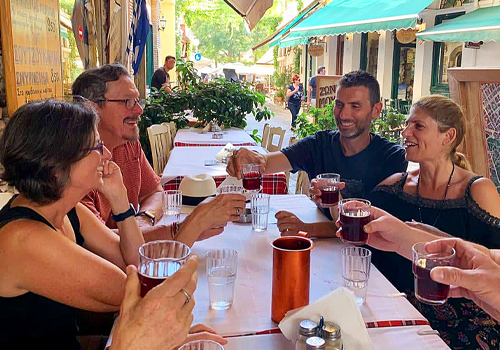Melomakarona
This is a honey-dipped Christmas cookie topped with crushed walnuts and cinnamon that is extremely popular and completely delicious.
The name melomakarona itself is a conjunction of two words that trace its roots back to Ancient Greece and very old traditions around funerals. The first part of the word – meli – means honey, which comes as no surprised since this is a honey-dipped cookie.
The second conjoined root word – makaroni – translates roughly to macaroni, or a kneaded pasta-like substance. Traditionally, this makaroni was a pasta served at funerals .This ancient form of makaroni was served at funerals and for a brief period thereafter as a way to bless the dead on their way to the afterlife.
While its unclear how or where “funeral pasta” evolved into intensely flavored Christmas cookies, one perfectly plausible reason might come from the steadfastly constant ingredient in melomakarona: honey.
In Ancient Greece, honey was a symbol of fertility and welfare, which many Greeks found desirable to have and not just at the end of their lives. It’s speculated that, in pursuit of this fertility and welfare, melomakarona transitioned from a staple at funerals to more festive, light-hearted holiday and new year celebrations.
Whilst it may be confusing how this cookie ended up as a steadfast Christmas tradition in Greece we can promise you that it is a very welcome addition to any table over this period and also is extremely popular when we hold food tours over the seasonal period.





